The United States is home to a wealth of fossil discoveries that have provided incredible insights into the ancient history of life on Earth. Among these remarkable finds are some truly bizarre fossils that defy our expectations and challenge our understanding of the natural world. From peculiar creatures to enigmatic plant remains, these fossils captivate the imagination and shed light on the astonishing diversity that once inhabited the American landscape. In this article, we will explore the 08 most bizarre fossils ever discovered in the USA, uncovering the strange and fascinating stories behind these extraordinary remnants of the past. Get ready to embark on a journey through time and encounter some of the most peculiar and intriguing fossils that nature has to offer.
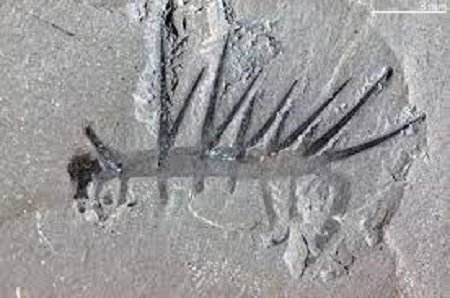
Hallucigenia
Hallucigenia is an extraordinary and enigmatic creature that roamed the ancient seas around 505 million years ago during the Cambrian period. Its bizarre appearance and unique anatomy have made it a fascination for paleontologists. With its spiky, worm-like body and numerous tentacle-like appendages, Hallucigenia is unlike any other creature found in the fossil record. Initially misinterpreted and reconstructed in various ways, its true nature was finally deciphered in the 1990s. Hallucigenia represents a remarkable example of the extraordinary diversity and complexity of early life forms. Its discovery has provided invaluable insights into the evolution of different body plans and the Cambrian explosion, a period of rapid diversification of life on Earth. Hallucigenia stands as a testament to the strangeness and wonder of the ancient world and continues to fuel scientific curiosity and exploration.
See also: The Top 10 Most Famous Works of Art in US History

Helicoprion
Helicoprion is an intriguing prehistoric creature that swam in the oceans around 290 million years ago during the Permian and Triassic periods. What sets Helicoprion apart is its distinctive spiral-shaped tooth whorl, which is one of the most baffling features in the fossil record. Initially, scientists struggled to determine the correct placement of this tooth structure. Eventually, through careful analysis and examination of fossil remains, it was revealed that the tooth whorl was located within the lower jaw, forming a unique circular saw-like apparatus. This remarkable adaptation likely allowed Helicoprion to feed on a variety of prey, possibly including fish and squid. The mystery and unusual nature of Helicoprion’s tooth whorl continues to fascinate paleontologists, shedding light on the incredible diversity and adaptations of ancient marine life. Its discovery serves as a reminder of the remarkable forms and evolutionary experiments that once thrived in Earth’s ancient oceans.
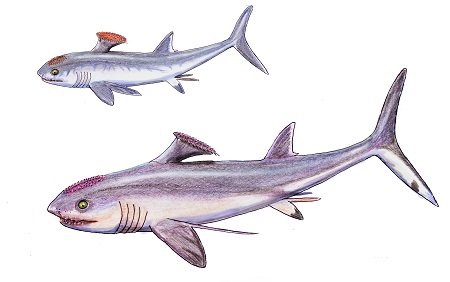
Stethacanthus
Stethacanthus is an intriguing prehistoric shark that swam the ancient seas around 380 million years ago during the Devonian period. What sets Stethacanthus apart is its unique dorsal fin, which is shaped like a comb or an ironing board and adorned with large spikes. This peculiar feature earned it the nickname “ironing board shark.” The purpose of this distinctive fin remains a subject of speculation, with theories ranging from display for mating rituals to enhancing maneuverability in the water. Stethacanthus is believed to have been a small to medium-sized shark, measuring around 2 to 3 meters in length. Its fossil remains have been discovered in various parts of the world, providing valuable insights into the ancient marine ecosystems and the evolution of sharks. Stethacanthus is a captivating example of the diverse and unusual forms that ancient marine life could take.
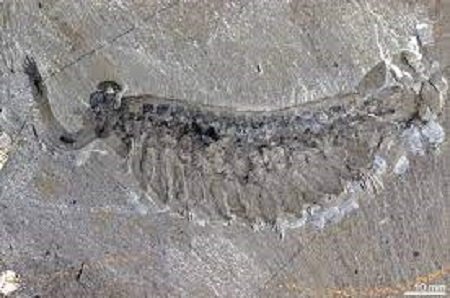
Opabinia
Opabinia, a peculiar creature that lived around 505 million years ago during the Cambrian period, is one of the most extraordinary and enigmatic fossils ever discovered. Its unique anatomy and bizarre array of body parts have perplexed scientists for decades. Opabinia had a long, segmented body and multiple pairs of grasping appendages, including five eyes and a peculiar, snorkel-like proboscis. This proboscis was used to capture prey, likely small invertebrates, from the seafloor. Opabinia’s peculiar body plan and specialized adaptations provide valuable insights into the early evolution of arthropods and shed light on the incredible diversity that emerged during the Cambrian explosion. While Opabinia may seem like a creature from another world, its existence serves as a reminder of the extraordinary forms and adaptations that have evolved throughout Earth’s history.

Dimetrodon
Dimetrodon, a prehistoric reptile that lived around 295 to 272 million years ago during the Permian period, is often mistaken for a dinosaur but is actually more closely related to mammals. What makes Dimetrodon truly fascinating is its prominent sail-like structure on its back, formed by elongated spines. This sail likely had multiple functions, including thermoregulation and display for courtship and intimidation. Despite its reptilian appearance, Dimetrodon was not a dinosaur but rather an early synapsid, a group of animals that eventually gave rise to mammals. It was an apex predator of its time, preying on a variety of other animals. The discovery of Dimetrodon fossils has provided significant insights into the evolutionary history of mammals and the diversity of life during the Permian period. Its distinct sail and carnivorous lifestyle make Dimetrodon an iconic figure of the prehistoric world.

Dunkleosteus
Dunkleosteus, a fearsome prehistoric fish that lived around 358 to 382 million years ago during the Late Devonian period, is an ancient predator that ruled the seas. Known for its massive size and formidable jaws, Dunkleosteus was one of the largest placoderms, an extinct group of armored fishes. It possessed a bony head plate and a set of razor-sharp, blade-like teeth that it used to crunch and slice through its prey. With a length of up to 10 meters, Dunkleosteus was a dominant predator of its time, feeding on smaller fish and other marine organisms. Its powerful bite and heavily armored body allowed it to survive and thrive in the ancient oceans. The discovery of Dunkleosteus fossils has provided valuable insights into the diversity and adaptations of prehistoric marine life, showcasing the impressive and sometimes terrifying creatures that once roamed the ancient seas.
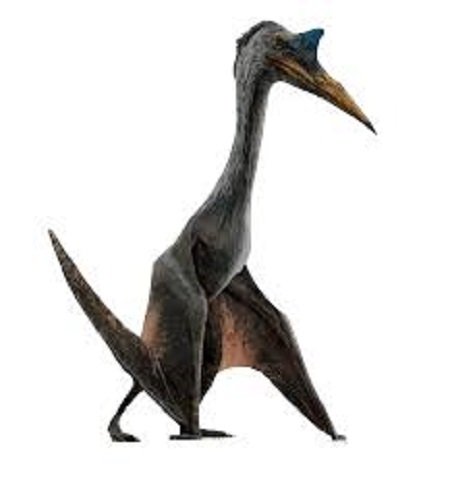
Quetzalcoatlus
Quetzalcoatlus, a magnificent creature that soared through the skies around 68 to 66 million years ago during the Late Cretaceous period, was one of the largest flying animals to have ever existed. Belonging to the pterosaur group, Quetzalcoatlus had an awe-inspiring wingspan that measured up to 10-11 meters, equivalent to that of a small airplane. With its long, slender beak and sharp teeth, it likely scavenged or hunted for prey on the ground. Quetzalcoatlus inhabited the ancient landscapes alongside dinosaurs, making it an impressive example of the incredible biodiversity during the late Mesozoic era. Its discovery has shed light on the evolution and adaptations of pterosaurs, allowing scientists to further understand the remarkable diversity of life in prehistoric times. Quetzalcoatlus continues to captivate our imaginations as a symbol of the incredible creatures that once ruled the skies.
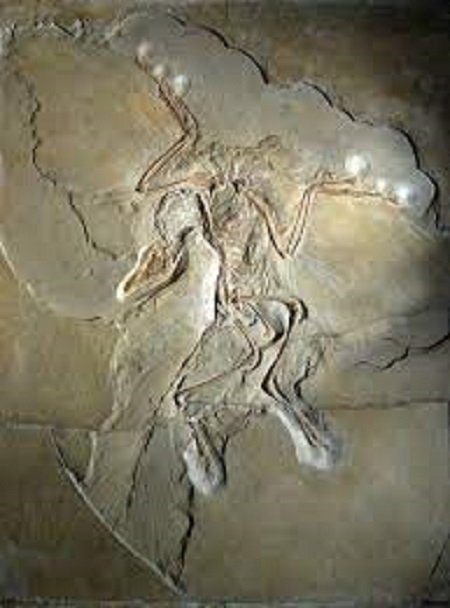
Archaeopteryx
Archaeopteryx is a fascinating and iconic fossil that holds a crucial place in the study of evolutionary history. Known as the “first bird,” it lived during the late Jurassic period around 150 million years ago. This ancient creature showcases a unique combination of reptilian and avian features, providing a remarkable link between dinosaurs and modern birds. Preserved with feather impressions, Archaeopteryx provides valuable insights into the origin of flight and the evolution of feathers. Its discovery has sparked significant debates and discussions among scientists, shedding light on the transition from land-dwelling reptiles to airborne creatures. With its feathered wings and dinosaur-like characteristics, Archaeopteryx stands as a testament to the complexity and wonder of life’s evolutionary journey through the ages.
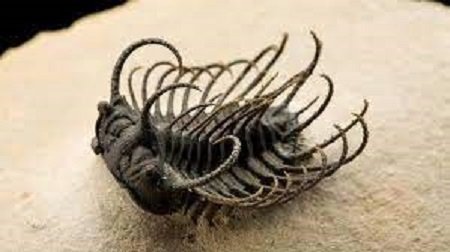
Trilobite
Trilobites were among the most diverse and successful creatures to have roamed the ancient seas. These fascinating marine arthropods dominated the planet for nearly 270 million years, from the early Cambrian to the end of the Permian period. Their name, “trilobite,” derives from the distinctive three-lobed body structure that facilitated their agile movements and contributed to their incredible adaptability. Trilobites varied greatly in size, shape, and complexity, with some species boasting intricate eye designs and others displaying elaborate spines or unique ornamentation. As valuable index fossils, their fossil record has aided geologists in dating and correlating rock layers. The study of trilobites offers valuable insights into prehistoric ecosystems and the evolutionary processes that shaped life on Earth long before the arrival of dinosaurs.
You may also like: Top 10 Best Food Cities in the US

Ediacaran
The Ediacaran period represents a crucial chapter in Earth’s history, spanning from approximately 635 to 541 million years ago. Named after the Ediacara Hills in Australia, this geologic era witnessed a significant diversification of complex, soft-bodied organisms, many of which are now extinct. The Ediacaran biota, as it is known, comprises a wide array of bizarre and enigmatic creatures that existed before the famous Cambrian explosion. While their exact relationships with modern organisms remain uncertain, they provide critical insights into the early evolution of complex life on our planet. The study of Ediacaran fossils has revolutionized paleontology, prompting scientists to reevaluate the origin and emergence of multicellular life and the ecological dynamics of ancient marine ecosystems.
Conclusion
The 08 most bizarre fossils ever discovered in the USA have provided a glimpse into the astonishing variety of life forms that once roamed the Earth. These fossils challenge our preconceived notions and stretch the boundaries of our understanding. From strange and otherworldly creatures to peculiar plants, each discovery adds a unique piece to the puzzle of our planet’s history. These fossils not only pique our curiosity but also serve as a reminder of the incredible diversity and resilience of life throughout the ages. As we continue to unearth and study these enigmatic remains, they deepen our appreciation for the wonders of the natural world and ignite our imagination. The bizarre fossils found in the USA stand as a testament to the profound mysteries that lie buried beneath our feet, waiting to be discovered and unraveled.
 Skip to content
Skip to content
